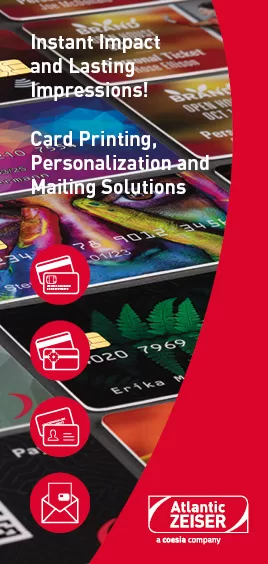
by Jennifer Kohlhepp | CM Magazine Featured
Premiumization and Hyper-Personalization: Transforming Consumer Expectations

In the dynamic landscape of consumer engagement, the expectations placed upon companies are in a state of perpetual flux. Two discernible trends that have crystalized in recent years are consumers’ increasing desire for offerings that align with their beliefs and way of life, as well as their fervent demand for hyper-personalization, shifting decisively away from the outdated notion of a universal solution. This article delves deeper into these trends and examines their implications within the realm of payments.
The Essence of Premiumization
To distill it to its core, premiumization addresses consumers’ willingness to pay a premium for products and services for a perception of extra quality or status. While the notion of premiumization may conjure images of exorbitant spending on opulent items, it encompasses a spectrum of preferences. These preferences include:
- Lifestyle Compatibility: Consumers, irrespective of their affluence, seek products harmonious with their beliefs and way of life.
- Signaling and Image Projection: Products serve as status symbols, reflecting the identity, aspirations and affiliations of their users.
- Emotional Gratification: Premium products fulfill emotional needs, with the goal of eliciting a profound sense of satisfaction.
Hyper-Personalization Unveiled
Hyper-personalization centers on delivering products and services tailored to individual preferences, a stark departure from the standardized offerings for mass consumer segments. This transformation stems partly from the influence of BigTechs like Amazon and Meta, which have raised the bar for user interaction standards. Today’s consumers, particularly Gen Z and millennials, anticipate personalized interactions in all facets of their lives, driven by their desire for uniqueness and their inclination to share these unique experiences on social media.
Helping Shape a Memorable Payment Experience
Matt Turner, head of digital at HSBC UK, sheds light on the manifestation of these trends in the banking sector, stating, “Getting to a one-to-one level of personalization is definitely a focus for us.” In the quest for hyper-personalization, banks stand apart from other industries, as they possess an unparalleled understanding of their customers’ (financial) preferences, which they can leverage to create unique (one-to-one) real-time offerings.
Payment interactions are the most frequent touchpoints between banks and their customers, and consequently, banks around the world are harnessing credit and debit cards as a means to meet the burgeoning demand for premium and personalized experiences. The accelerating growth of banks issuing metal cards reflects this dynamic evolution. These cards exude distinctiveness, both in their tangible weight and their audible presence (the “clang” sound) when dropped on a surface. Some metal cards are further personalized by engraving the cardholder’s signature directly onto the metal. Payments have evolved to spark memorable experiences for the consumer; the payment card has indeed gone from being functional to becoming a fashion statement.
In an era of premiumization and hyper-personalization, the prevailing formula for success in banking appears to be succinctly captured by the adage: “Save your customers money, and they’ll remain loyal today. Make your customers feel unique, and they’ll remain devoted to you indefinitely.”
About the Author: Amanda Gourbault serves as the chief revenue officer of CompoSecure Inc. (Nasdaq: CMPO), a leader in metal payment cards, security and authentication solutions. She is responsible for leading the company’s sales, pricing, marketing and revenue management activities. She is also focused on driving adoption of the company’s revolutionary authentication and cold storage solutions, Arculus, using her 25 years of experience in the payments and security industry. Prior to joining CompoSecure, she served as executive vice president of the Financial Institutions Business Unit at IDEMIA, a global leader in payment cards and identity/security credentials. At IDEMIA, Amanda was responsible for a global division with more than 2,600 employees, comprising sales, marketing and product development teams, as well as more than 30 card personalization centers worldwide. Before IDEMIA, Amanda was with Giesecke & Devrient, where she created and ran their UK subsidiary. Amanda holds a bachelor’s degree in modern languages from Durham University in England. She is also chair of the Compass for Life Foundation, helping disadvantaged children achieve their dreams.





